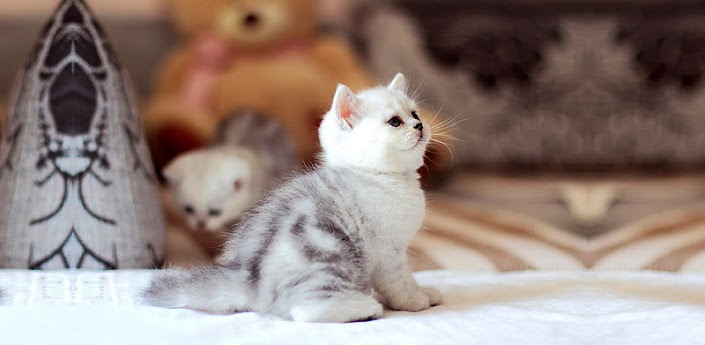Source(google.com.pk)
Wallpaper For Computers Biography
In the past few months there has been a significant amount of discussion within the romance reading and writing community about historical romances, and much of the heat in these discussions was generated by the use of the term ‘wallpaper historicals’ .
As a reader, my preference is for historicals which appear to me to be relatively accurate in their depiction of the past. I say ‘relatively accurate’ because I don’t think it is possible for any work to be entirely accurate. There is so much we don’t know about the past, and reproducing the language and speech patterns of historical characters might well render a book extremely difficult for the modern reader to understand. Despite my personal preferences, however, I think it is important to acknowledge that the level of historical accuracy in a romance cannot be used as an indicator of either literary merit or entertainment value.
Determining which historical romances are ‘wallpaper’ and which are more accurate may require a considerable degree of historical knowledge on the part of the reader. Once a relatively accurate historical romance has been identified, however, its use of history sets the characters and the issues raised by the romance in a historical context. This enables the reader to take the long view on questions such as the role of women in society etc, and thus see how much, or how little, has changed in the intervening years since the era in which the book is set. Nonetheless, each historical romance is a product of its own time: while attempting to remain true to the period depicted, it is likely to deal with issues such as sexuality and male/female relationships from a perspective which is shaped by 21st century attitudes. Issues may then be perceived to be universal in nature, but expressed differently at different times and in different cultures. This sort of historical romance also offers a historical commentary on the period in which it is set. In that respect it is the literary equivalent of the more accurate historical reenactment societies, which seek to explore what life was really like in the past. Finally, the more accurate type of historical romance invites the reader to read it both in the context of the literature in the period in which it is set, and in the context of contemporary works, since it engages with both the past and the present.
The historical romance whose author has striven for accuracy and succeeded in bringing history to life is, then, potentially an extremely challenging text. This does not mean, however, that one should therefore dismiss all ‘wallpaper’ historicals as ‘bad’ literature and mere entertainment. We need to fully recognise the possibility that a work may be full of historical inaccuracies and still be a great literary work. The following defence of Shakespeare’s work could be equally appropriate if used to describe ‘wallpaper’ historical romances since it argues that the author
should not be criticised too heavily for misrepresenting historical events. His plays were works of fiction and entertainment, intended for performance in a specific arena and written according to a rigid style and structure.
Wallpaper removal is not new. Wallpaper has been manufactured and installed for several generations. In the early days there was no special solution manufactured. People removed wallpaper with their own "home recipes". The most common recipe was vinegar and hot water. This worked adequately because most wallpaper at the time was made of real paper installed on home made pastes, usually wheat based. The acid of the vinegar would attack the paste.
After World War II wallpaper boomed onto the decorating scene. Many manufacturers entered the marketplace and by doing so created new types of wallpapers. Wallpaper was not made just from paper anymore. The outer surface (the part seen by the consumer) now had several types of looks; grass cloth, string, fabric, silk, to name just a few. This required a "backing" paper typically laminated to the outer (viewed) surface to give the paper strength to adhere to the wall. New adhesives were a necessity to make the paper adhere to the wall.
In the 1960's wallpaper boomed even more as a decorating material. Wallpaper manufacturers jumped at the market demand. This created even more paper types and adhesive variations. Bold colors and patterns were the rage. Foil and flocked wallpapers appeared.
In the late 1960's and early 1970's new "vinyl" wallpaper products were introduced. Vinyl was the answer. Vinyl, an oil based product was cheap and easy to print. Typical vinyl wall coverings consist of an outer layer of vinyl laminated to a paper backing. Someone coined the phrase "strippable" which is still used today. "Strippable" wallpaper means that eventually you will be able to get it off the wall. It does not mean that the process of removing it will be easy. People began to find out that wallpaper removal was not easy which in part lead to a decline in wallpaper use.
The wallpaper industry responded by manufacturing "prepasted" wallpapers that were to be simple to install and remove. The prepasted paper usually consisted of paper with a thin layer of dried glue applied to the back. The consumer was to simply place the paper underwater causing the glue to activate then adhere to the wall. The problem is no one thought about human nature. Society had been trained for years to paste wallpaper to the wall so most people added paste to the back of the prepasted paper. Human nature compounded the problem with the theory that "A little bit of glue is good therefore a whole lot of glue is real good".










Wallpaper For Computers Biography
In the past few months there has been a significant amount of discussion within the romance reading and writing community about historical romances, and much of the heat in these discussions was generated by the use of the term ‘wallpaper historicals’ .
As a reader, my preference is for historicals which appear to me to be relatively accurate in their depiction of the past. I say ‘relatively accurate’ because I don’t think it is possible for any work to be entirely accurate. There is so much we don’t know about the past, and reproducing the language and speech patterns of historical characters might well render a book extremely difficult for the modern reader to understand. Despite my personal preferences, however, I think it is important to acknowledge that the level of historical accuracy in a romance cannot be used as an indicator of either literary merit or entertainment value.
Determining which historical romances are ‘wallpaper’ and which are more accurate may require a considerable degree of historical knowledge on the part of the reader. Once a relatively accurate historical romance has been identified, however, its use of history sets the characters and the issues raised by the romance in a historical context. This enables the reader to take the long view on questions such as the role of women in society etc, and thus see how much, or how little, has changed in the intervening years since the era in which the book is set. Nonetheless, each historical romance is a product of its own time: while attempting to remain true to the period depicted, it is likely to deal with issues such as sexuality and male/female relationships from a perspective which is shaped by 21st century attitudes. Issues may then be perceived to be universal in nature, but expressed differently at different times and in different cultures. This sort of historical romance also offers a historical commentary on the period in which it is set. In that respect it is the literary equivalent of the more accurate historical reenactment societies, which seek to explore what life was really like in the past. Finally, the more accurate type of historical romance invites the reader to read it both in the context of the literature in the period in which it is set, and in the context of contemporary works, since it engages with both the past and the present.
The historical romance whose author has striven for accuracy and succeeded in bringing history to life is, then, potentially an extremely challenging text. This does not mean, however, that one should therefore dismiss all ‘wallpaper’ historicals as ‘bad’ literature and mere entertainment. We need to fully recognise the possibility that a work may be full of historical inaccuracies and still be a great literary work. The following defence of Shakespeare’s work could be equally appropriate if used to describe ‘wallpaper’ historical romances since it argues that the author
should not be criticised too heavily for misrepresenting historical events. His plays were works of fiction and entertainment, intended for performance in a specific arena and written according to a rigid style and structure.
Wallpaper removal is not new. Wallpaper has been manufactured and installed for several generations. In the early days there was no special solution manufactured. People removed wallpaper with their own "home recipes". The most common recipe was vinegar and hot water. This worked adequately because most wallpaper at the time was made of real paper installed on home made pastes, usually wheat based. The acid of the vinegar would attack the paste.
After World War II wallpaper boomed onto the decorating scene. Many manufacturers entered the marketplace and by doing so created new types of wallpapers. Wallpaper was not made just from paper anymore. The outer surface (the part seen by the consumer) now had several types of looks; grass cloth, string, fabric, silk, to name just a few. This required a "backing" paper typically laminated to the outer (viewed) surface to give the paper strength to adhere to the wall. New adhesives were a necessity to make the paper adhere to the wall.
In the 1960's wallpaper boomed even more as a decorating material. Wallpaper manufacturers jumped at the market demand. This created even more paper types and adhesive variations. Bold colors and patterns were the rage. Foil and flocked wallpapers appeared.
In the late 1960's and early 1970's new "vinyl" wallpaper products were introduced. Vinyl was the answer. Vinyl, an oil based product was cheap and easy to print. Typical vinyl wall coverings consist of an outer layer of vinyl laminated to a paper backing. Someone coined the phrase "strippable" which is still used today. "Strippable" wallpaper means that eventually you will be able to get it off the wall. It does not mean that the process of removing it will be easy. People began to find out that wallpaper removal was not easy which in part lead to a decline in wallpaper use.
The wallpaper industry responded by manufacturing "prepasted" wallpapers that were to be simple to install and remove. The prepasted paper usually consisted of paper with a thin layer of dried glue applied to the back. The consumer was to simply place the paper underwater causing the glue to activate then adhere to the wall. The problem is no one thought about human nature. Society had been trained for years to paste wallpaper to the wall so most people added paste to the back of the prepasted paper. Human nature compounded the problem with the theory that "A little bit of glue is good therefore a whole lot of glue is real good".
Wallpaper For Computers
Wallpaper For Computers
Wallpaper For Computers

Wallpaper For Computers

Wallpaper For Computers

Wallpaper For Computers

Wallpaper For Computers

Wallpaper For Computers

Wallpaper For Computers

Wallpaper For Computers

Wallpaper For Computers
No comments:
Post a Comment